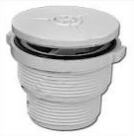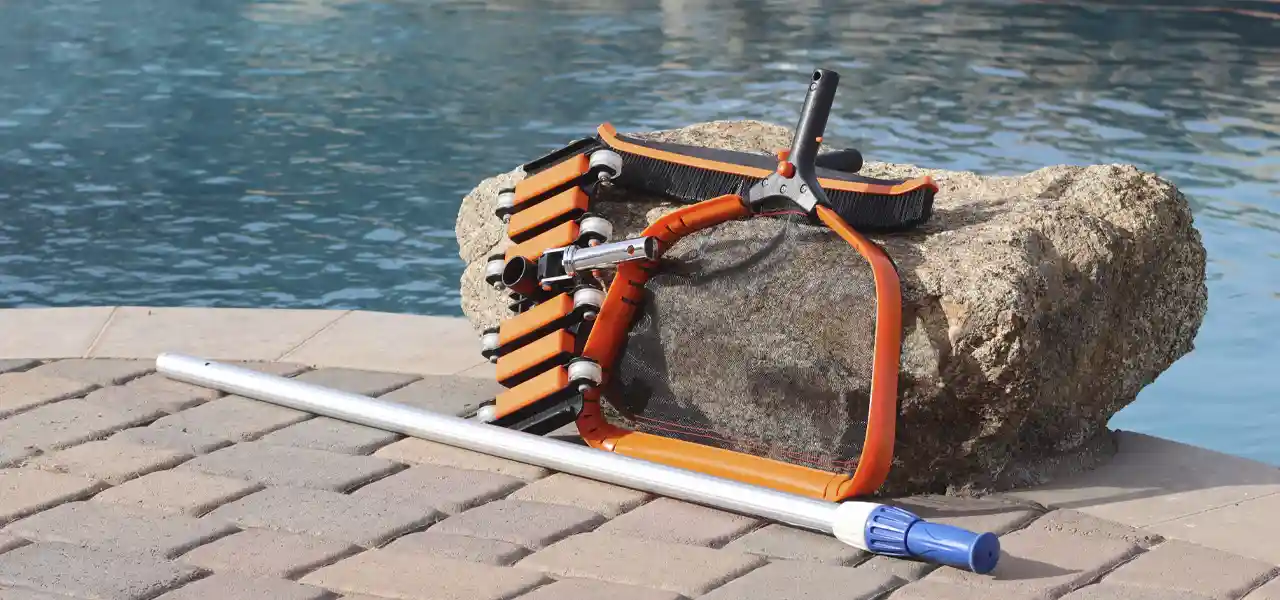 Have you ever wondered what those white rings are on the floor of a plastered swimming pool? They are called hydrostatic relief plugs or hydrostats, for short. Hydrostat plugs are usually plastered in place, but beneath the plaster, they thread into a piece of slotted pipe that runs through the floor of the pool. Below the floor, this pipe terminates into a gravel pit beneath the pool.
Have you ever wondered what those white rings are on the floor of a plastered swimming pool? They are called hydrostatic relief plugs or hydrostats, for short. Hydrostat plugs are usually plastered in place, but beneath the plaster, they thread into a piece of slotted pipe that runs through the floor of the pool. Below the floor, this pipe terminates into a gravel pit beneath the pool.
Hydrostatic openings in the pool floor are put in place to allow groundwater to enter the pool rather than lift the pool out of the ground with immense pressure. This pressure is known as hydrostatic pressure and could be a problem for pools built in a topographically depressed location or an area with a high water table. Hydrostatic plugs are put in place for the purpose of manually opening them, should you drain the pool for cleaning or repair.
You will usually find these in the center of the floor. One in the shallow end, one at mid-depth and one or two in the deep end. There may also be one inside of the main drain pot, directly in the bottom. This particular plug we are showing is called a Josam plug and was used specifically with old-style Sylvan Pools. Your plug will likely look slightly different under the plaster that fills the center.

Many pool builders use the Hayward SP1022B plug, shown right. The Hayward plug is easier to find than the Josam plug these days (shown below) and will make a good substitute if you need to replace your hydrostatic plug after removing it (they can get a little beat-up looking after removal).
How to Remove Hydrostatic Relief Plugs From the Pool Floor
If you are draining the pool, especially for more than a day, you should open at least one of these floor plugs to prevent problems from a high water table putting pressure under the pool. To remove a hydrostatic plug, chisel the plaster out from inside of the plug, so that you can get a pair of straight pliers onto the center ridge. Twist counterclockwise and the hydrostat plug will thread out. Then you can take a look into the pipe, which will usually be dry.

If water starts to come into the pool or perhaps even a full-blown geyser erupts, that’s good. That’s why you opened it! The water flow should stop at some point, just keep pumping the water out of the pool, and discharge it to a storm drain or to a location that won’t recycle itself back underneath the pool.
Automatic Hydrostatic Relief Valves

These are mounted in the bottom of the main drain pot and have a spring loaded mechanism to allow water to come into the pool automatically when you drain the pool. Automatic hydrostats have an O-ring seal that prevents water from leaking out of the pool. This O-ring can slip out of position, however, and cause a leak on it’s own. Automatic hydrostats are typically used only on commercial pools or on high-end residential pools.
Vinyl liner pools don’t have hydrostats installed, but for some pools with particular water problems, they can be installed inside of a main drain pot to allow water to come into the pool, instead of bulging the pool liner. It may be a better option to correct the water issues surrounding the pool redirecting water flows away from the pool than to install automatic relief plugs into a main drain pot, set on top of a large bed of gravel. But every water table situation is different.
To summarize:
What are hydrostatic plugs? They allow high-pressure underground water to enter the pool, rather than allowing so much force to build under the pool shell that it pops the pool out of the ground when empty.
What should I do with hydrostatic plugs? Open them when you drain the pool. Opening just one is sufficient and if you have no water entering the pool, you can probably keep the other plugs intact while you work on the empty pool.

Rob Cox
InTheSwim Blog Editor



I have a pool self put in in 1958 that has no main drain, just side discharge & I want to put a hydrostatic valve in the deep & shallow end when we empty it to paint, I can’t do anything about it connecting to anything, will that work as a preventative to the pool floating out of the ground?
Yes, hydrostatic relief valves are not normally connected to anything, just to a gravel pit beneath the pool. You would install by using a core drill, and buying the hydrostat body with strainer, and parge it into the pool shell very well, so it won’t leak.